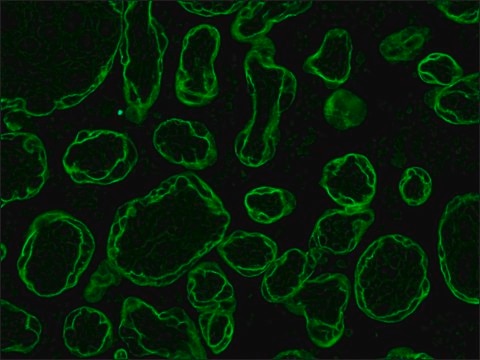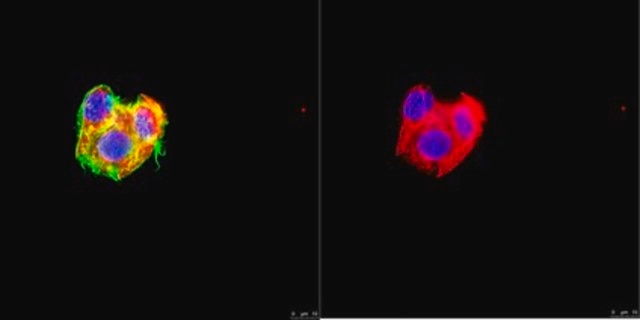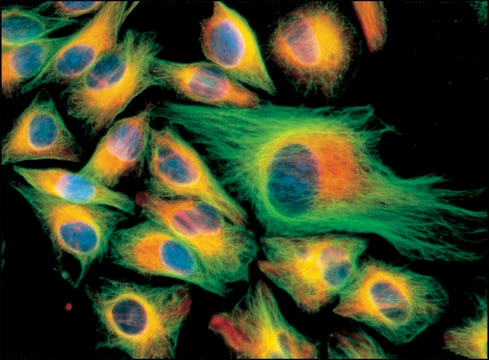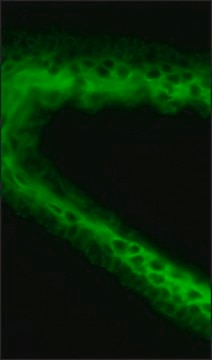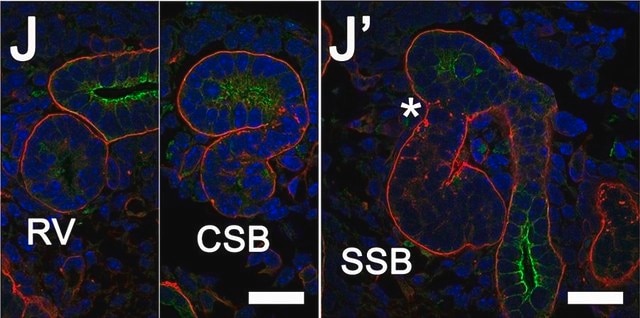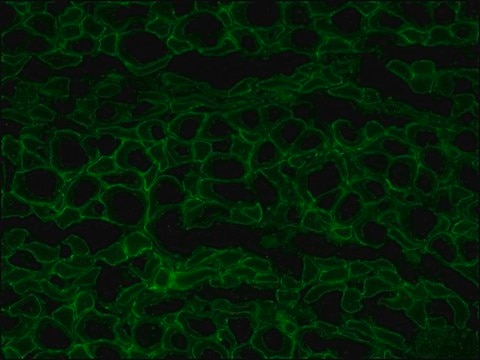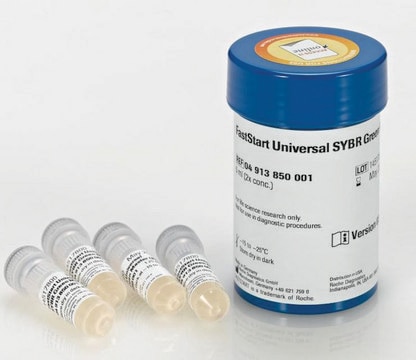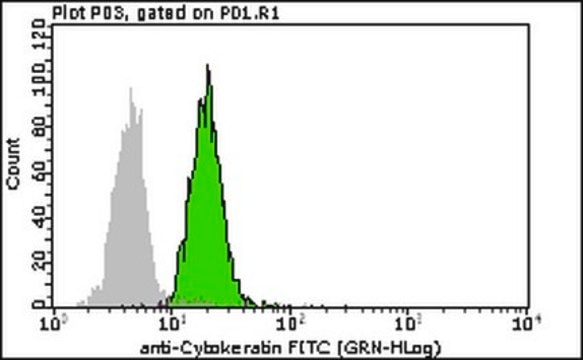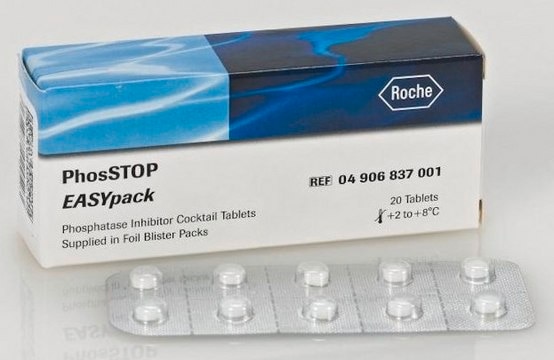General description
Keratins are the intermediate filament proteins of epithelia that display high degree of molecular diversity. They are heteropolymeric filaments formed by pairing of type I and type II keratins that are expressed in a highly specific patterns depending on the epithelial type and stage of cellular differentiation. Keratins contain a central rod domain of about 310 amino acids with alpha-helical conformation bordered by non-helical head and tail domains of variable length. The head domain consists of subdomains V1 and H1. The central alpha helical rod domain is composed of subdomains 1A, 1B, 2A, and 2B connected by the linkers L1, L12, and L2. The tail domain then consists of subdomains H2 and V2. They provide stability between epithelial cells and their attachment to basement membrane. An important unique feature of cytokeratins is their epithelial cell-type-specific expression. Hence, they can be used as tumor markers and epithelial differentiation markers. Cytokeratin-5 (CK5) is a type II cytoskeletal protein that is primarily expressed in basal keratinocytes in the epidermis, specifically in the stratified epithelium lining the skin and digestive tract. It can serve as a biomarker for several different types of cancer, including breast and lung cancers. Cytokeratin-8 (CK8) is a type II, neutral to basic protein that together with cytokeratin-19 (KRT19) helps to link the contractile apparatus to dystrophin at the costameres of striated muscle. It can undergo phosphorylation on three major serine residues: Serine 23, 431, and 73. Serine 23 is shown to be highly conserved in all type II keratins. It can also undergo O-glycosylation in a cell cycle-dependent manner and glycosylation increases its solubility and reduces stability by inducing proteasomal degradation. CK8 expression has been correlated with malignancy in leukoplakia and carcinomas of the head and neck and its expression has been observed in all non-small-cell lung cancers.
Specificity
Cytokeratin 5 and 8. MAB3228 is a broadly reacting cytokeratin antibody specific for cytokeratin 5 and cytokeratin 8. This antibody recognizes virtually all epithelial tissues and carcinomas.
Immunogen
Cytokeratins from the human lung cancer cell line MR21.
Application
Research Category
Cell Structure
Research Sub Category
Cytokeratins
This Anti-Cytokeratin 5/8 is validated for use in FC, WB, IC, IH(P) for the detection of Cytokeratin 5.
Western blot
Immunohistochemistry on frozen and paraffin embedded tissue sections.
Immunocytochemistry
Flow cytometry
Optimal working dilutions must be determined by the end user.
Physical form
Format: Purified
Liquid in buffer with 0.1% sodium azide.
Storage and Stability
Maintain at -20°C in undiluted aliquots up to 6 months. Avoid repeated freeze/thaw cycles.
Other Notes
Concentration: Please refer to the Certificate of Analysis for the lot-specific concentration.
Legal Information
CHEMICON is a registered trademark of Merck KGaA, Darmstadt, Germany
Disclaimer
Unless otherwise stated in our catalog or other company documentation accompanying the product(s), our products are intended for research use only and are not to be used for any other purpose, which includes but is not limited to, unauthorized commercial uses, in vitro diagnostic uses, ex vivo or in vivo therapeutic uses or any type of consumption or application to humans or animals.
